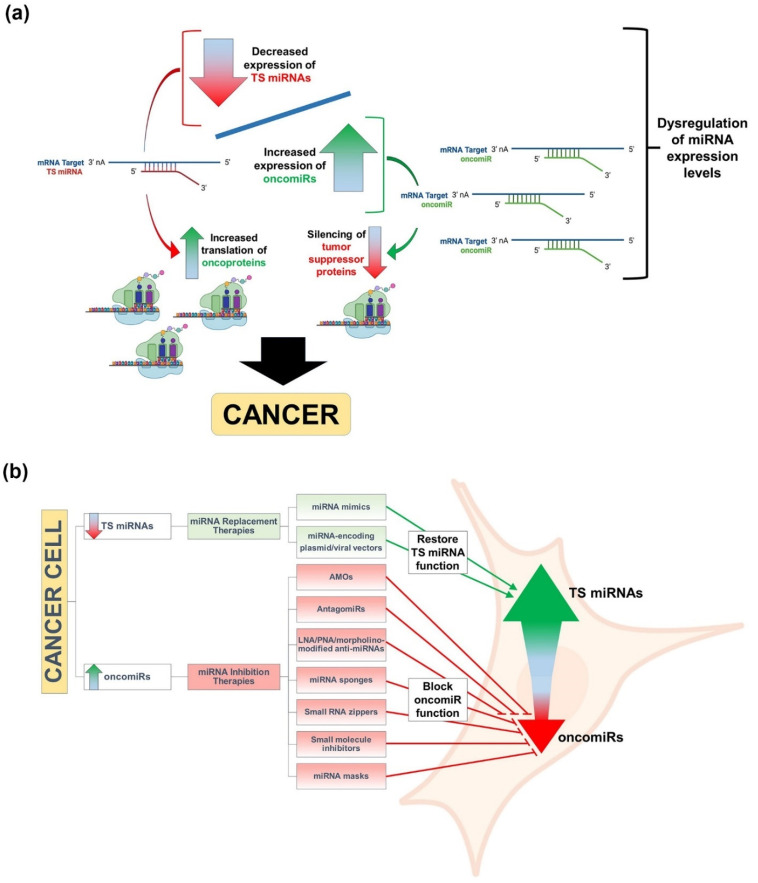Figure 1.
Graphical depictions highlighting the different types of cancer-associated miRNAs and the molecular therapeutic approaches to alleviating their abnormal expression in cancer. (a) Classes of tumor-associated miRNAs and their mechanisms of promoting cancer. Tumor-associated miRNAs are classified as either oncogenic miRNAs (oncomiRs) or tumor suppressor miRNAs (TS miRNAs), and the dysregulation of the expression levels of these tumor-associated miRNAs leads to cancer onset and progression. In particular, oncomiRs are typically overexpressed in malignant cells/tissues and promote cancer by silencing mRNAs encoding tumor suppressor proteins (green curved arrow), whereas TS miRNAs are downregulated and result in increases in the translation of their target oncoprotein-encoding mRNAs (red curved arrow). (b) miRNA inhibition and replacement therapies for cancer treatment. miRNA inhibition and replacement therapies are molecular interventions designed to either suppress oncomiR or restore TS miRNA functions, respectively. Approaches to enhance TS miRNA function via miRNA replacement therapy have been achieved through the use of chemically synthesized/modified, double-stranded miRNA mimics, as well as through the use of plasmid or viral vectors engineered to encode specific TS miRNAs that can replenish the lost miRNAs within cancer cells. Alternatively, approaches to antagonize oncomiR function via the use of antimiRs, resulting in the impairment of cancer progression, have been achieved through the use of antisense miRNA oligonucleotides (AMOs), antagomiRs, locked nucleic acid (LNA)/peptide nucleic acid (PNA)/morpholino-modified anti-miRNAs, miRNA sponges, small RNA zippers, small-molecule inhibitors, or miRNA masks. Select images within the figure were acquired from BioRender.com.

